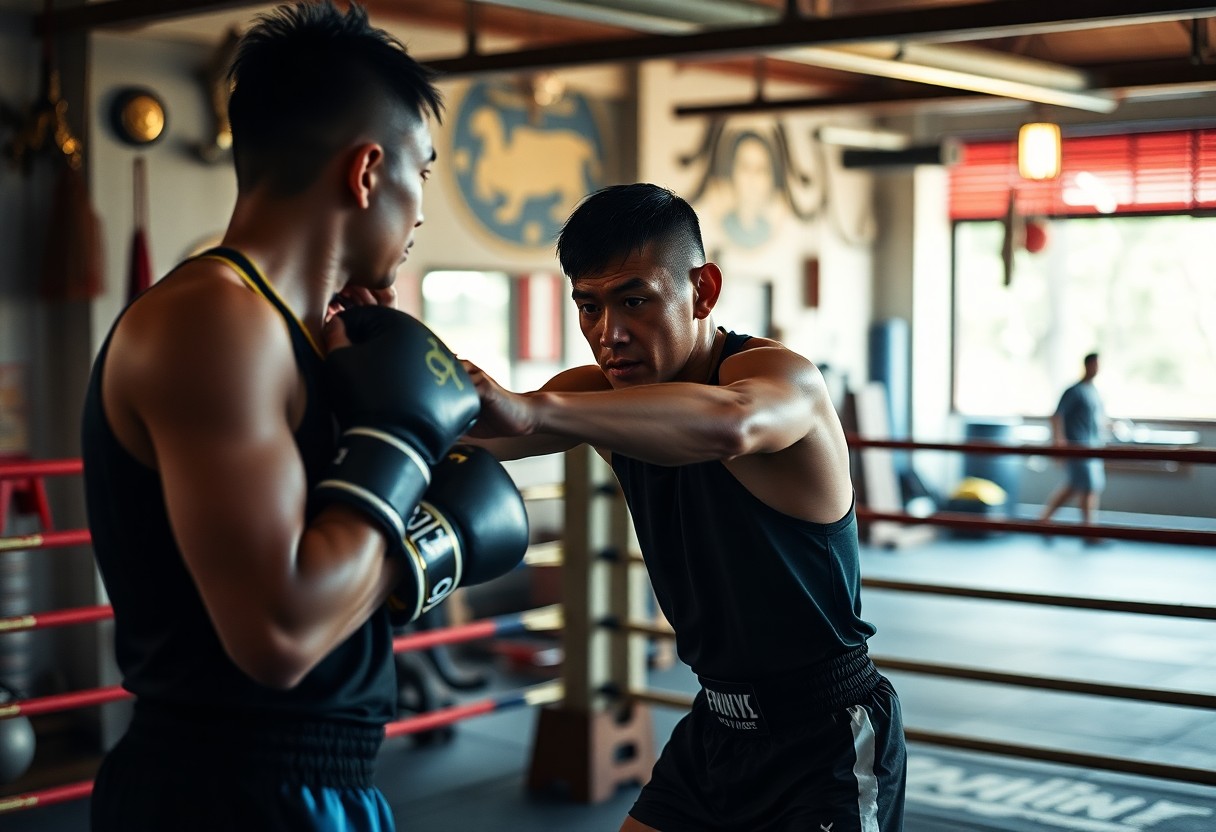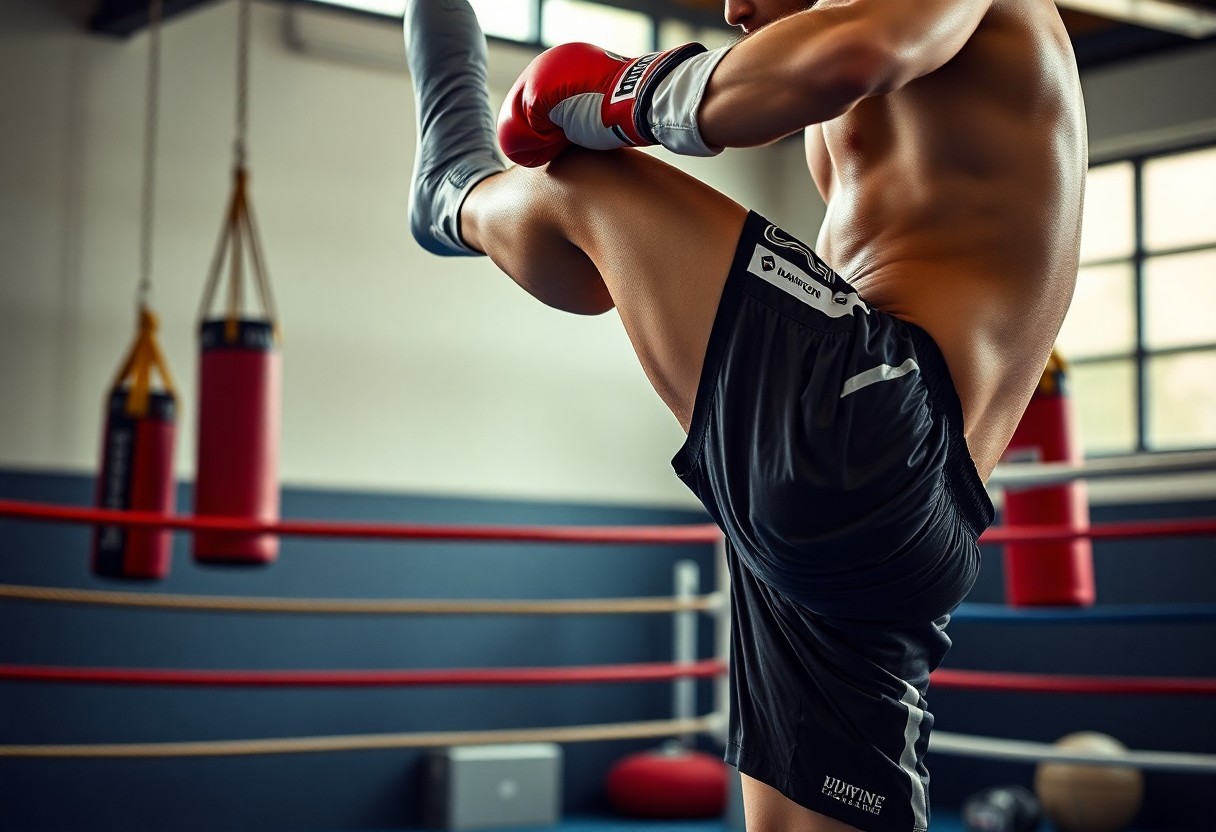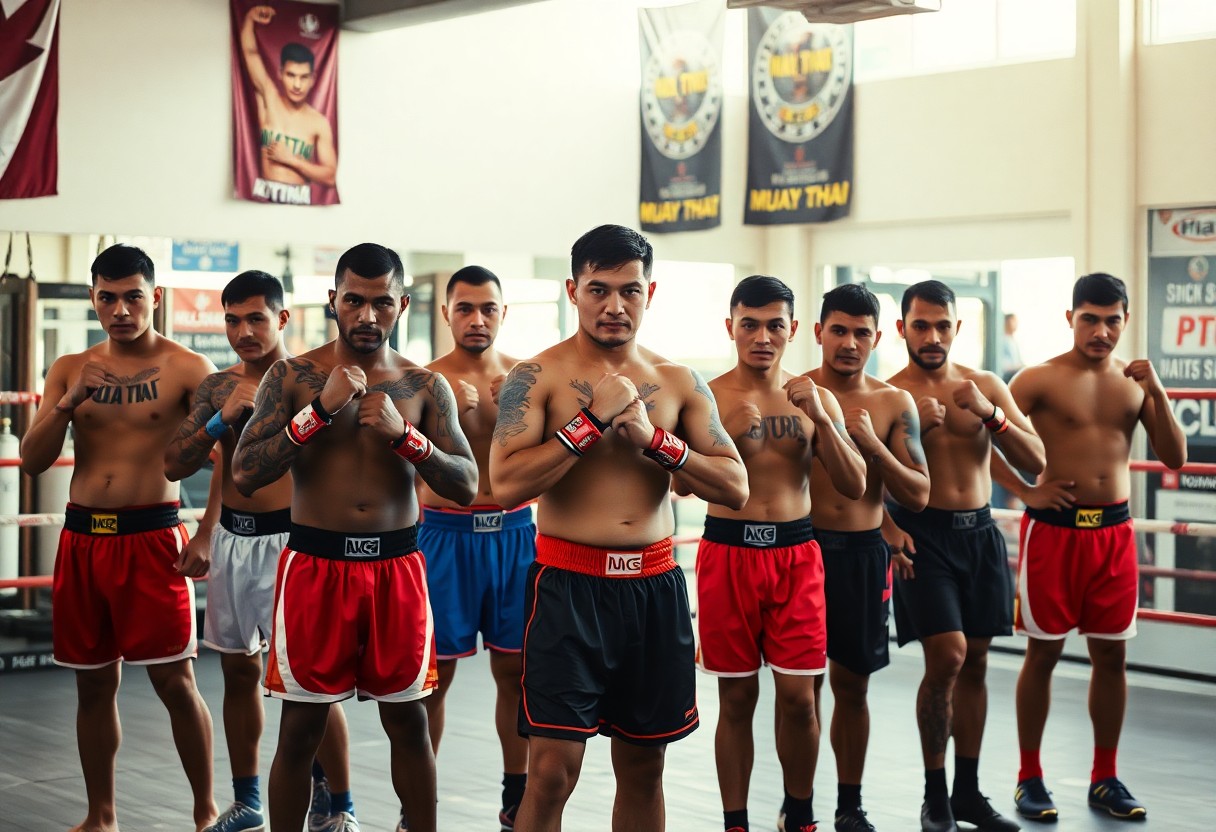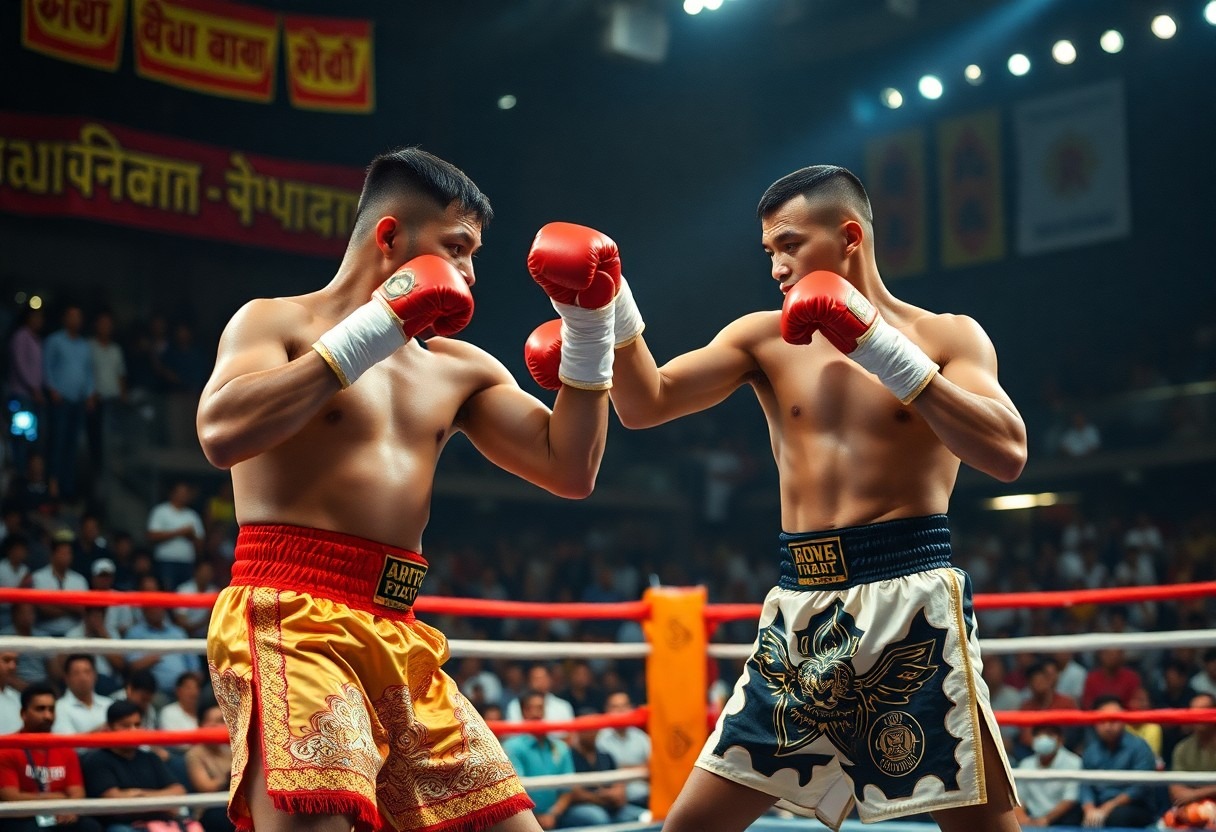
Over the years, you have likely heard about the striking power and rich culture of Muay Thai, a martial art that goes beyond mere physical conditioning. In this blog post, you will explore vital techniques, examine into the vibrant traditions that underpin this striking art, and gain valuable training insights to enhance your skills. Whether you are a beginner or an experienced fighter, this journey will equip you with the knowledge necessary to master Muay Thai effectively and respectfully.
History of Muay Thai
To truly understand Muay Thai, you must explore its rich history. Originating in Thailand, this striking martial art has evolved over centuries, deeply rooted in the traditions of the Siamese military. The techniques and practices you see today reflect both historical battlefield strategies and cultural significance, illustrating how they intertwine to create a unique combat sport revered around the world.
Origins and Evolution
At its core, Muay Thai began as a form of military training for warriors in ancient Siam, allowing you to harness practical fighting techniques that had real-world applications. Over time, it transitioned into a sport, incorporating formalized rules and rituals, which shaped the unique identity it carries today. You will find that these evolving practices coupled with rigorous training regimens have solidified its place in both the martial arts community and as a symbol of Thai heritage.
Cultural Significance
Significance is deeply woven into the fabric of Muay Thai, reflecting Thailand’s rich heritage and values. As a practitioner, you engage with rituals such as the Wai Khru, a dance performed to pay respects to your teachers and the sport itself, illustrating the profound respect ingrained in this martial art. Muay Thai serves as a bridge connecting generations, fostering community and pride, and allowing you to become part of a legacy that celebrates discipline, strength, and national identity.
As you venture into the world of Muay Thai, you will discover that its cultural significance extends beyond mere combat. A testament to Thai resilience, Muay Thai plays a vital role in various celebrations and events throughout Thailand, transcending the sport to weave itself into the daily lives of its people. By practicing Muay Thai, you not only enhance your physical capabilities but also embrace the traditions and stories that have shaped this art form, making your journey a significant part of Thailand’s cultural narrative.
Techniques of Muay Thai
One of the hallmarks of Muay Thai is its versatility in striking and defensive techniques. You will learn to combine punches, kicks, elbows, and knee strikes, each executed with precision to maximize power and efficiency. Understanding the fundamentals of these techniques not only enhances your performance but also builds a solid foundation for more advanced maneuvers as you progress in your training.
Striking Techniques
Along with its reputation as “The Art of Eight Limbs,” Muay Thai employs a dynamic range of striking techniques that utilize the fists, shins, elbows, and knees. Each of these limbs plays a vital role in both offense and defense, enabling you to maintain constant pressure on your opponent while creating openings for counter-attacks. Mastering these striking techniques will significantly enhance your effectiveness in the ring.
Defensive Maneuvers
One of the necessary components of Muay Thai is learning how to defend against strikes effectively. Understanding various defensive maneuvers allows you to protect yourself while creating opportunities to counterattack. You’ll explore techniques such as blocking, evading, and clinching, which are vital for keeping you safe in the ring.
Techniques like blocking involve using your forearms to absorb incoming strikes while maintaining your stance and balance. Evading requires precise footwork and head movement to slip punches or kicks, keeping you one step ahead of your opponent. Clinching is another vital maneuver that can neutralize your opponent’s attacks, allowing you to control the fight and deliver damaging knee strikes from a close range. Incorporating these defensive techniques into your training will arm you with the skills necessary to navigate any encounter effectively.
Training Regimens
While mastering Muay Thai requires dedication and discipline, establishing a structured training regimen is important for developing your skills. A well-rounded program incorporates various elements such as technique drills, strength training, and tactical sparring sessions, ensuring you build proficiency while enhancing your physical conditioning. Each session should aim to challenge your limits, allowing you to progress steadily and effectively as a fighter.
Conditioning and Endurance
Endurance is a fundamental aspect of your Muay Thai training, enabling you to maintain your performance across multiple rounds in a match. Incorporating activities like running, skipping rope, and high-intensity interval training will bolster your cardiovascular fitness. Supplement your routine with strength exercises that build muscle endurance, ensuring that you can withstand the rigors of both training and competition without fatigue.
Sparring and Practice
Around the heart of your training regimen lies the practice of sparring, where you can apply your techniques against a live opponent. Engaging in sparring sessions helps you develop timing, distance management, and adaptability under pressure. It also allows you to assess your progress while gaining invaluable experience in reading your opponent’s movements, enhancing your strategic skills in real-time situations.
Hence, sparring is not just about competition; it serves as a critical bridge between practice and performance. By regularly engaging in controlled sparring, you will identify areas for improvement in your technique, defense, and overall fight strategy. Additionally, the feedback received from training partners and coaches during these sessions will prove instrumental in refining your approach. Embrace the challenges that come with sparring, as they are invaluable opportunities for growth on your Muay Thai journey.
Muay Thai Equipment
Now that you’re ready to investigate your Muay Thai journey, understanding the equipment you need is vital. The right gear will enhance your training experience, safety, and performance. From gloves to shin guards, equipping yourself appropriately will not only protect you but also improve your overall skill development in this dynamic martial art.
Essential Gear
For beginners, investing in the right crucial gear is non-negotiable. Your training setup should include quality boxing gloves, hand wraps, shin guards, shorts, and appropriate footwear. This equipment provides protection and comfort while you train and spar, allowing you to focus entirely on mastering your technique.
Choosing the Right Equipment
Among the myriad of options available, selecting the right equipment can feel overwhelming. Focus on quality and fit, which are more important than brand names or price tags. Prioritizing gear that complements your training style ensures you’ll be both comfortable and protected as you progress through your Muay Thai experience.
Equipment should match your individual needs and goals, so consider factors like your body type, training intensity, and skill level when making purchases. It is advisable to visit local shops where you can try on gloves and shin guards for the best fit. Researching reviews on different brands will also guide your choices, helping you find items that stand up to rigorous training and provide lasting value as you advance in your Muay Thai journey.
Traditions and Rituals
Once again, the rich history of Muay Thai intertwines with timeless traditions and rituals that enhance the sport’s authenticity. These customs not only honor the sport’s roots but also foster a deep connection between fighters and their cultural heritage. Understanding and participating in these traditions can enrich your training experience, instilling a sense of respect for the art you practice and the warriors who came before you.
Wai Kru Ceremony
After every training session, you may witness the Wai Kru ceremony, a significant ritual that involves a traditional dance performed before a match. This act of respect pays homage to your trainers, ancestors, and the spirit of Muay Thai, allowing you to express gratitude for the knowledge passed down through generations. Engaging in this ceremony can deepen your understanding of the sport and unify you with fellow practitioners.
Other Cultural Rituals
About the other cultural rituals surrounding Muay Thai, you will find practices that vary in significance and application. These rituals often include the use of sacred amulets, blessings performed by monks, and the ceremonial wrapping of gloves, each steeped in cultural meaning. Integrating these practices into your training regimen not only connects you to the tradition of Muay Thai but also instills a sense of purpose and focus as you prepare for your fights.
To explore the depth of Muay Thai’s cultural landscape, you’ll discover that traditions extend beyond the Wai Kru ceremony. Rituals such as paying respect to the ring and participating in ceremonies led by respected masters serve to acknowledge the sport’s spiritual dimensions. Additionally, the practice of donning protective gear and equipment with intention signifies respect for the art. Embracing these rituals can foster mindfulness in your training and enhance your overall performance, allowing you to honor the heritage of Muay Thai in your journey.
Competitions and Rules
All Muay Thai competitions adhere to specific structures and guidelines that enhance the sport’s integrity and safety. These competitions range from local events to international championships, each with its own rules that athletes must follow to ensure fair play and skill demonstration.
Types of Competitions
Across the globe, you will find various Muay Thai competitions that cater to different skill levels and styles, including:
| Type | Description |
| Amateur | Entry-level events for beginners. |
| Professional | Advanced matches with specialized fighters. |
| Pro-Am | Combines amateur and professional fighters. |
| Championship | High-stakes matches for titles. |
| Showcases | Exhibitions highlighting technique and artistry. |
This variety allows you to choose competitions that align with your skill set and aspirations.
Governing Rules and Regulations
At every level of Muay Thai, rules ensure that competitions remain safe and competitive. These guidelines pertain to fighting techniques, scoring, and safety equipment to protect all participants.
Considering the diverse nature of Muay Thai globally, governing bodies have developed specific regulations that standardize combat rules. These guidelines cover necessary aspects such as legal strikes, prohibited techniques, scoring criteria, and fighter eligibility. You should familiarize yourself with these rules, as they not only ensure fair competition but also enhance your understanding of the sport’s nuances. Being knowledgeable about these regulations can provide you with a strategic advantage in both training and competition settings.
Conclusion
Now that you have explored the techniques, traditions, and training insights of Muay Thai, you can appreciate the depth of this combat art. By embracing the skills and philosophies shared throughout your journey, you can enhance your practice and deepen your understanding. Whether you’re a beginner or advancing in your training, these insights will help you develop not just physically, but also mentally and spiritually. Commit to your training, respect the traditions, and you’ll find your mastery of Muay Thai evolving continuously.





